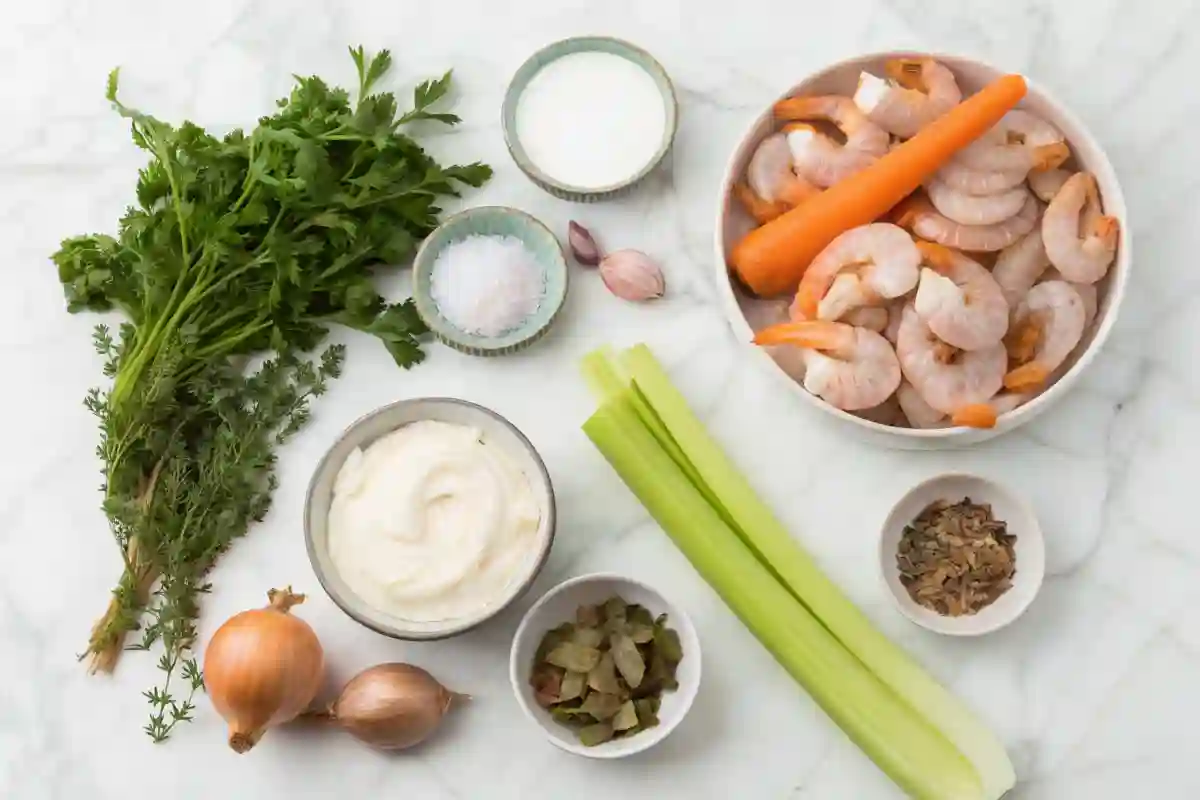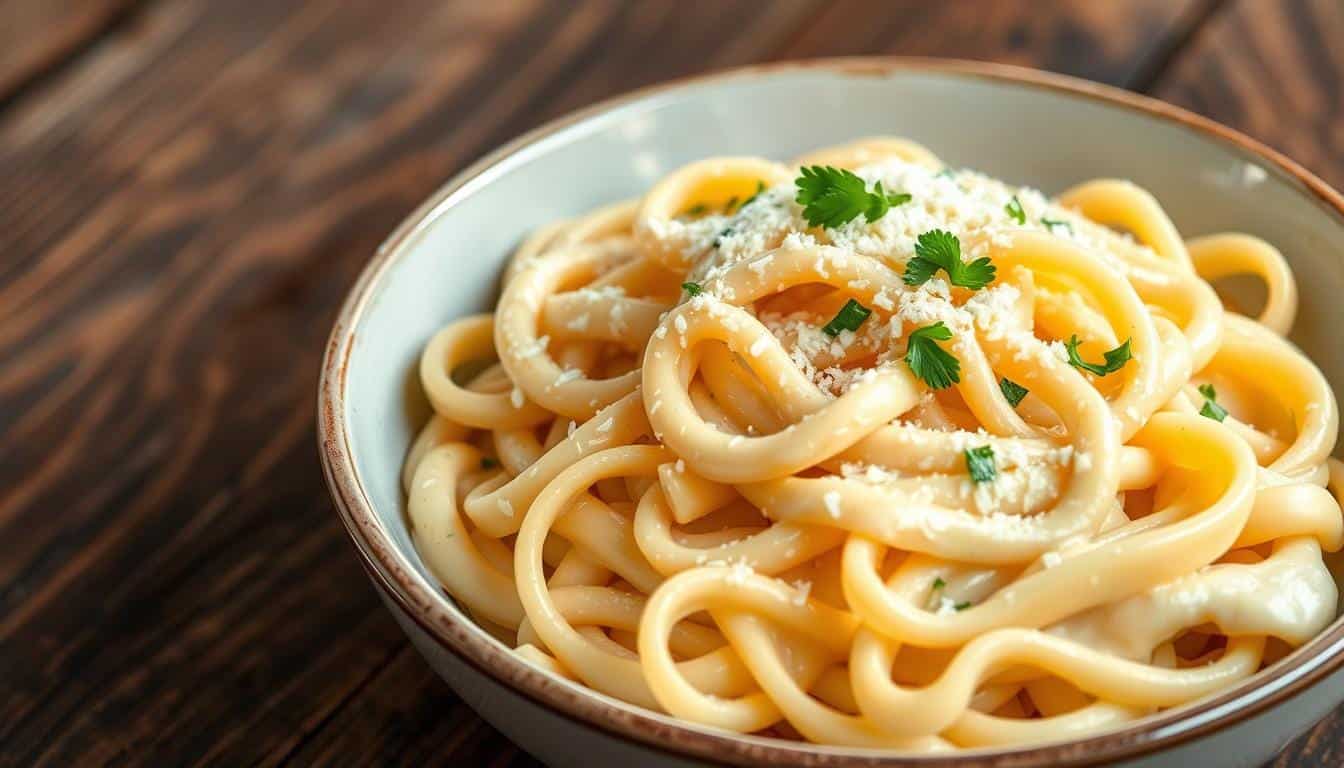Cream of shrimp soup is a culinary delight. It’s a rich, creamy dish that’s packed with flavor.
But can you eat it by itself?
This is a question many soup enthusiasts ask. The answer isn’t as straightforward as you might think.
In this article, we’ll explore the pros and cons of eating cream of shrimp soup as a standalone dish. We’ll delve into its nutritional content, the key ingredients used, and the health benefits of shrimp.
We’ll also discuss ways to enhance your cream of shrimp soup experience. Whether you’re a seasoned cook or a beginner in the kitchen, this guide will provide you with valuable insights.
So, let’s dive into the world of creamy seafood soups and discover the versatility of cream of shrimp soup.
Table of Contents
Introduction

Understanding Cream of Shrimp Soup
Cream of shrimp soup is a beloved dish in many seafood-loving households. Its origins can be traced back to coastal regions where shrimp are abundant. These areas have a rich history of incorporating seafood into their diets. Today, this soup’s popularity extends far beyond the coast. Its creamy texture and unique taste make it a favorite choice for many.
At its core, cream of shrimp soup is a simple blend of shrimp, cream, and spices. The key to its appeal lies in the quality of the shrimp and the harmony of flavors. The cream forms a smooth base that envelops the shrimp. This creates a luxurious mouthfeel that makes the dish stand out. A variety of vegetables like onions, celery, and carrots are often added. These bring both nutritional value and a touch of color to the soup.
The simplicity of the ingredients means there’s plenty of room for creativity. Cooks often experiment with the soup by adding their favorite herbs or even a splash of sherry. Some enjoy mixing in other seafood like crab or lobster for a more decadent experience. The rich flavor of cream of shrimp soup makes it versatile. It can be both a hearty main course or an elegant starter in a multi-course meal.
For a detailed recipe on how to make creamy shrimp soup, visit the Creamy Shrimp Soup Recipe and follow the step-by-step guide.
Common Uses of Cream of Shrimp Soup
Cream of shrimp soup is versatile in its uses. Many enjoy it as a comforting meal, especially in colder months. The warmth and richness can make it feel like the perfect remedy for a chilly day. It’s often served solo in a bowl, allowing diners to savor its nuanced flavors.
Others prefer to pair it with something complementary. A slice of crusty bread or a side salad can elevate the meal. The bread is perfect for dipping, and the salad adds a fresh contrast. It can transform the soup into a balanced meal without much fuss.
In culinary terms, cream of shrimp soup is a multi-faceted dish. It’s a favorite in dinner parties due to its sophisticated taste and presentation. Hosts appreciate its ability to please many palates with minimal effort. Whether hot or cold, it offers a taste of the sea that feels indulgent yet accessible.
Another practical use is as an ingredient in other recipes. It can serve as a base for casseroles or as a sauce for pasta dishes. Many cooks love its ability to enhance and complement other flavors. For those pressed for time, it can also be a quick, ready-made solution. Simply reheat and serve for a delicious meal in minutes.
You can also use creamy shrimp soup as a base for other dishes, like seafood chowder. Check out the Seafood Chowder Recipe for inspiration.
Nutritional Content
Key Ingredients in Cream of Shrimp Soup

The ingredients in cream of shrimp soup play a vital role in its taste and nutritional profile. Fresh or frozen shrimp forms the foundation of this dish. Known for their sweet, subtle flavor, shrimp are essential in achieving the soup’s distinct taste. They not only provide protein but also add an oceanic essence that makes the dish unique.
Cream is the primary component that gives this soup its signature smoothness. It creates a rich and creamy texture that many enjoy. For a lighter version, some opt for milk or even a dairy-free cream substitute. This swap can alter the calorie content while still maintaining that creamy feel.
Vegetables like onions, celery, and carrots are often added to enhance flavor and nutrition. They provide a slight crunch and a hint of sweetness. These veggies add depth and complexity, making the soup not just delicious but also wholesome. Spices and herbs like garlic, bay leaves, and thyme elevate the dish further. A touch of paprika or cayenne might be included for those who enjoy a spicier kick.
Health Benefits of Shrimp
Shrimp are not only tasty but also packed with health benefits. They’re a lean source of protein, providing essential amino acids needed for body functions. High in iodine, shrimp contribute to thyroid health. This mineral is crucial for hormone production and metabolism regulation.
Beyond protein and iodine, shrimp offer omega-3 fatty acids. These nutrients are known for supporting heart health. Consuming foods rich in omega-3s can reduce inflammation and lower the risk of chronic diseases. Shrimp also contain antioxidants like astaxanthin, which protects cells from damage.
Another advantage of shrimp is their low-calorie profile. This makes them an excellent choice for those watching their caloric intake. Yet, despite their low calories, they are nutrient-dense, offering vitamins and minerals such as B12 and selenium. These nutrients are vital for maintaining healthy nerves and boosting the immune system.
Caloric Content and Dietary Considerations

The caloric content of cream of shrimp soup varies, depending largely on ingredients. A traditional version made with cream can be higher in calories due to the fat content. If watching calorie intake, using milk or a lighter cream can reduce calories significantly.
Portion size is crucial when considering caloric content. It’s easy to overindulge because of the rich taste. Thus, moderation is key, especially if served as a main course. Pairing it with lower-calorie side dishes like salads can help maintain a balanced meal.
For those concerned with sodium, it’s vital to be cautious. Often, soups can be high in sodium, impacting heart health. Opting for low-sodium broth or adjusting seasoning can help reduce this. The soup’s richness allows for reducing salt without sacrificing flavor.
Individuals with dietary restrictions can still enjoy cream of shrimp soup. Modifications such as dairy-free creams for lactose intolerance or gluten-free thickeners cater to various dietary needs. It’s a flexible dish accommodating many diets while providing warmth and satisfaction.
If you want to store cream of shrimp soup for later, check out this guide on How to Properly Store Soup for practical tips.
Pros of Eating Cream of Shrimp Soup by Itself
Creamy Texture and Rich Flavor
One of the most appealing features of cream of shrimp soup is its luxurious, creamy texture. The smoothness of the cream, when combined with tender shrimp, offers a satisfying experience with every spoonful. This texture is comforting, making the soup a popular choice during colder months when people crave warmth and richness.
The rich flavor of the soup is another significant advantage. The blend of sweet shrimp, aromatic herbs, and savory spices creates a complex taste profile that doesn’t require additional dishes to shine. The natural sweetness of shrimp pairs beautifully with the cream, resulting in a balanced taste that is both light and indulgent. Each ingredient contributes to an overall flavor depth that can stand alone, delighting your palate without the need for accompaniments.
Moreover, the savory aroma wafting from a steaming bowl can be irresistible, inviting you to savor it entirely on its own. This delicious richness can transform a simple meal into an extraordinary dining experience, appealing to seafood lovers everywhere.
Convenience and Easy Preparation
Cream of shrimp soup stands out for its convenience and ease of preparation. For those with busy schedules, it offers a quick cooking solution. Most recipes involve minimal steps and ingredients, allowing even novice cooks to achieve a satisfying result without much hassle.
The simplicity of preparation doesn’t compromise on taste. With just a few ingredients, you can whip up a batch in a matter of minutes. The process generally involves sautéing vegetables, adding broth, and letting the cream and shrimp meld together to create a velvety finish. It’s this simplicity that makes it a go-to recipe when time is short or when you’re not in the mood for elaborate cooking.
Another factor contributing to its convenience is its versatility in serving sizes. You can easily adjust the quantity to serve just yourself or a group. This adaptability makes it ideal for both solo meals and family dinners. Additionally, it reheats well, allowing you to make it ahead and enjoy throughout the week with minimal effort.
In essence, cream of shrimp soup brings together ease and elegance in one dish, providing a quick yet satisfying meal choice for all occasions.
Cons of Eating Cream of Shrimp Soup by Itself
High Sodium Content
Although cream of shrimp soup offers delightful flavors, it often comes with a high sodium content. Many prepared soups, particularly canned or prepackaged versions, contain significant amounts of salt. This is used to enhance flavor and preserve the product, but it can contribute to excessive sodium intake.
Consuming high amounts of sodium on a regular basis can pose health risks. It is linked to elevated blood pressure, which can increase the likelihood of heart disease and stroke. Even homemade versions can be high in sodium, especially if you’re not mindful of the salt content in stock or broth and other seasoning blends used.
Another concern is that salty foods might lead to cravings for more sodium-rich foods, perpetuating a cycle of high sodium consumption. For individuals monitoring their sodium levels for health reasons, it’s crucial to adjust the recipe or consume the soup in moderation. Alternatively, using low-sodium or sodium-free ingredients can help reduce potential risks without sacrificing flavor.
Lack of Balanced Nutrition
Cream of shrimp soup by itself might not provide a balanced nutritional profile. While it includes protein from shrimp and some vitamins from vegetables, it’s primarily rich in fats and carbohydrates. The heavy use of cream contributes to high fat content, which may not align with the dietary goals of all individuals.
A diet relying solely on this type of soup could lack essential nutrients. Important components like fiber, essential vitamins, and minerals might be insufficient in a dish centered around cream and seafood alone. This absence could lead to nutritional gaps, especially if the soup is consumed frequently as a standalone meal.
Additionally, solely eating cream of shrimp soup could mean missing out on other food groups that are pivotal for overall health. Including diverse foods ensures a broader range of nutrients that support bodily functions. To achieve a more balanced diet, it’s advised to pair the soup with a variety of foods. This can include vegetables, whole grains, or salads to complement the creamy texture and enrich the meal nutritionally.
Ways to Enhance Cream of Shrimp Soup
Adding Fresh Ingredients
To elevate cream of shrimp soup, consider incorporating fresh ingredients. They can significantly boost flavor and nutrition. Fresh herbs like dill or parsley add a layer of freshness and a pop of color. They provide a pleasant contrast to the soup’s creamy base.
Another way to enhance the soup is by adding vegetables. Fresh corn kernels or chopped spinach can add texture and natural sweetness. Vegetables like bell peppers or carrots bring vibrant colors and extra vitamins. This combination can transform the dish from simple to complex in taste and appearance.
You can also experiment with other seafood, such as crab or scallops. These additions can make the soup more sophisticated and suitable for special occasions. When adding extra seafood, balance the soup’s richness with a splash of citrus juice. Lemon or lime can brighten the overall flavor profile and prevent it from becoming overpowering.
Pairing with Complementary Dishes
Combining cream of shrimp soup with complementary dishes can create a more satisfying meal. One classic pairing is serving the soup with crusty bread. Sourdough or baguette can offer a hearty partner, perfect for dipping into the soup’s rich broth.
Salads also make a great accompaniment. A crisp green salad with a tangy vinaigrette can balance the creaminess of the soup. Consider a simple arugula salad with cherry tomatoes and a light lemon dressing. The fresh flavors can cleanse the palate and prevent the meal from feeling too heavy.
For a more substantial meal, pair the soup with a side of rice or quinoa. These grains can absorb the soup’s flavors, making each bite delightful. Alternatively, serve the soup as a starter in a multi-course meal. Follow it with a grilled seafood main dish to maintain a cohesive theme while ensuring a memorable dining experience.
Can you eat cream of soup by itself?
Yes, cream-based soups like cream of shrimp, mushroom, or potato can be eaten by themselves. Their rich, creamy texture and robust flavors make them satisfying as standalone dishes. To enhance the experience, you can add toppings like fresh herbs, croutons, or a drizzle of olive oil.
Can I eat cream of mushroom soup without heating?
Technically, you can eat cream of mushroom soup without heating, especially if it’s canned and pre-cooked. However, heating enhances the flavors and improves the texture, making it more enjoyable. Cold soup might feel thick and less appetizing compared to a warm, comforting bowl.
Is cream of chicken soup good on its own?
Yes, cream of chicken soup is delicious on its own. It’s a hearty and flavorful option that can be enjoyed as a light meal or snack. Adding a slice of crusty bread or crackers can make it even more filling.
Can you eat cream of potato soup by itself?
Absolutely! Cream of potato soup is rich and satisfying enough to be eaten alone. Its creamy consistency and chunks of potato make it a comforting dish. To elevate the experience, try adding shredded cheese, crispy bacon bits, or a dollop of sour cream.
Conclusion
Making an Informed Decision
When deciding if cream of shrimp soup can stand alone, consider its richness and nutritional profile. It’s creamy, satisfying, and packed with protein. However, it may lack some essential nutrients if consumed solo. Assess your dietary needs and preferences. For a more balanced approach, think about adding fresh ingredients or pairing it with complementary sides. These choices ensure you enjoy a nutritious and delightful meal without sacrificing flavor or convenience. Evaluate your health goals and meal objectives to determine how best to incorporate this dish into your diet.
Final Thoughts on Enjoying Cream of Shrimp Soup
Ultimately, cream of shrimp soup can be a delightful dish on its own or as part of a larger meal. Its versatility allows for creative culinary exploration. Whether you relish it solo or with added accompaniments, it offers a warming and satisfying eating experience. By adjusting ingredients and portion sizes, it suits a wide range of tastes and dietary needs. Remember, the real joy of this soup lies in its rich taste and comforting nature. Therefore, embrace your culinary creativity and enjoy every flavorful spoonful of this creamy seafood classic.







